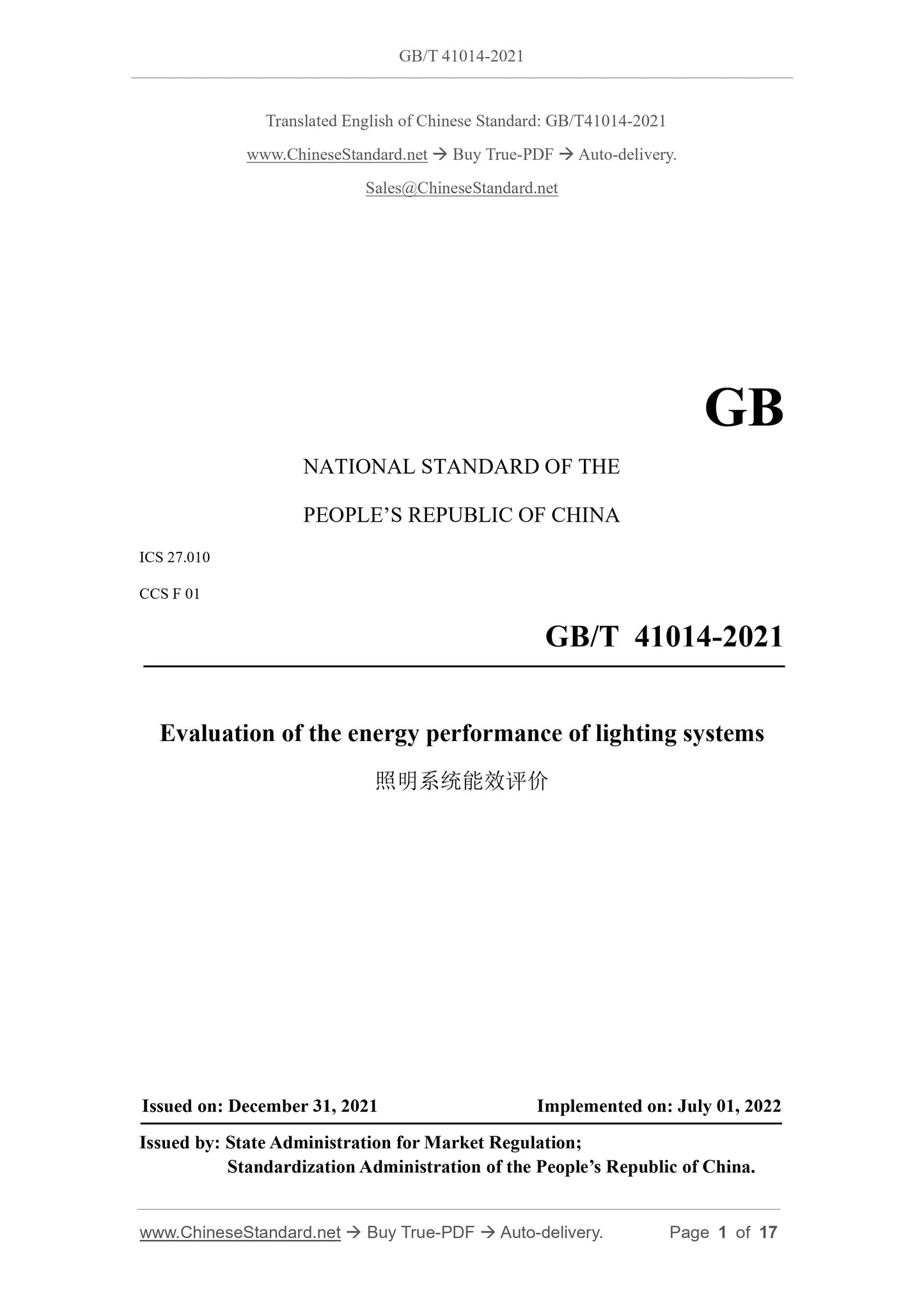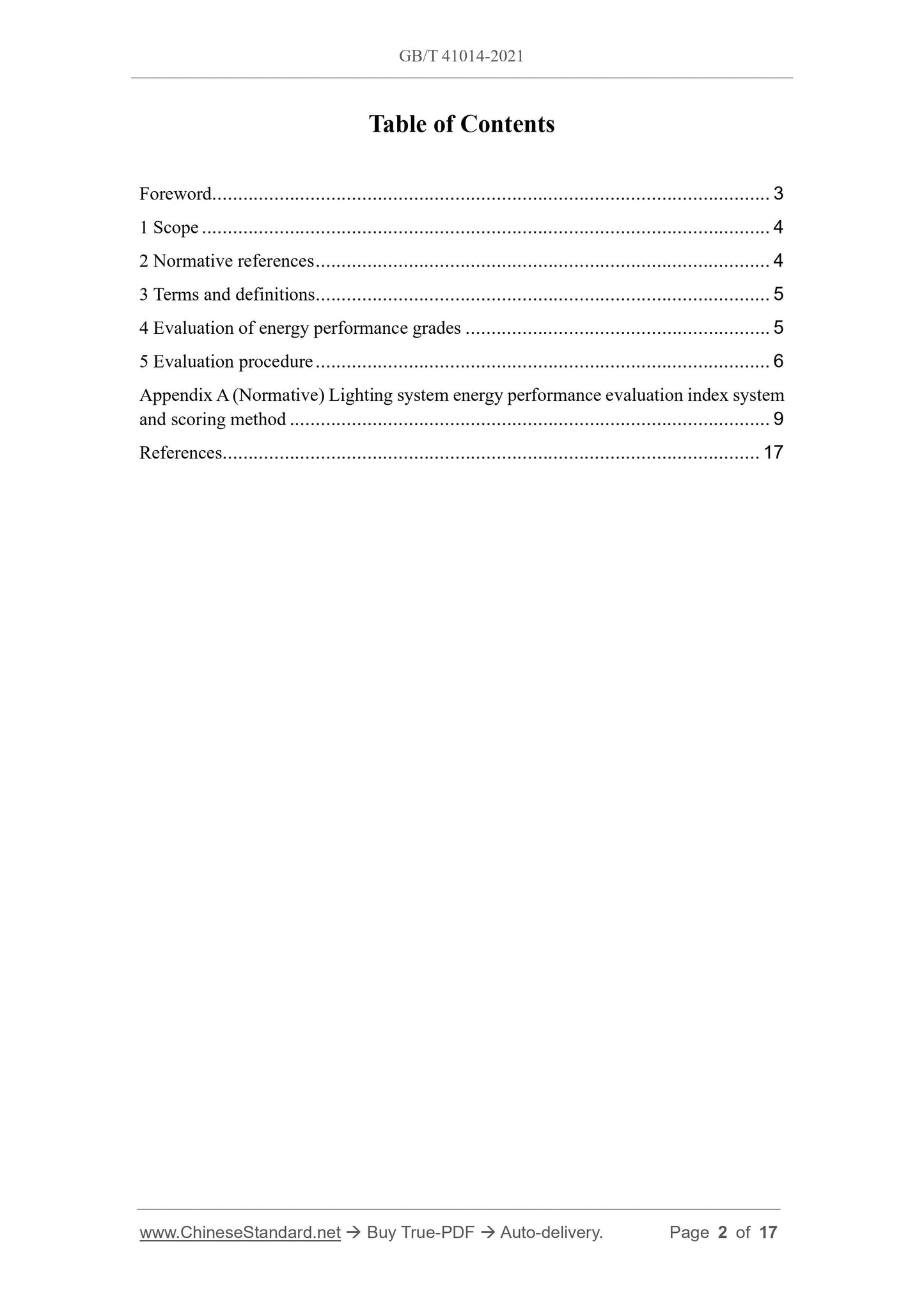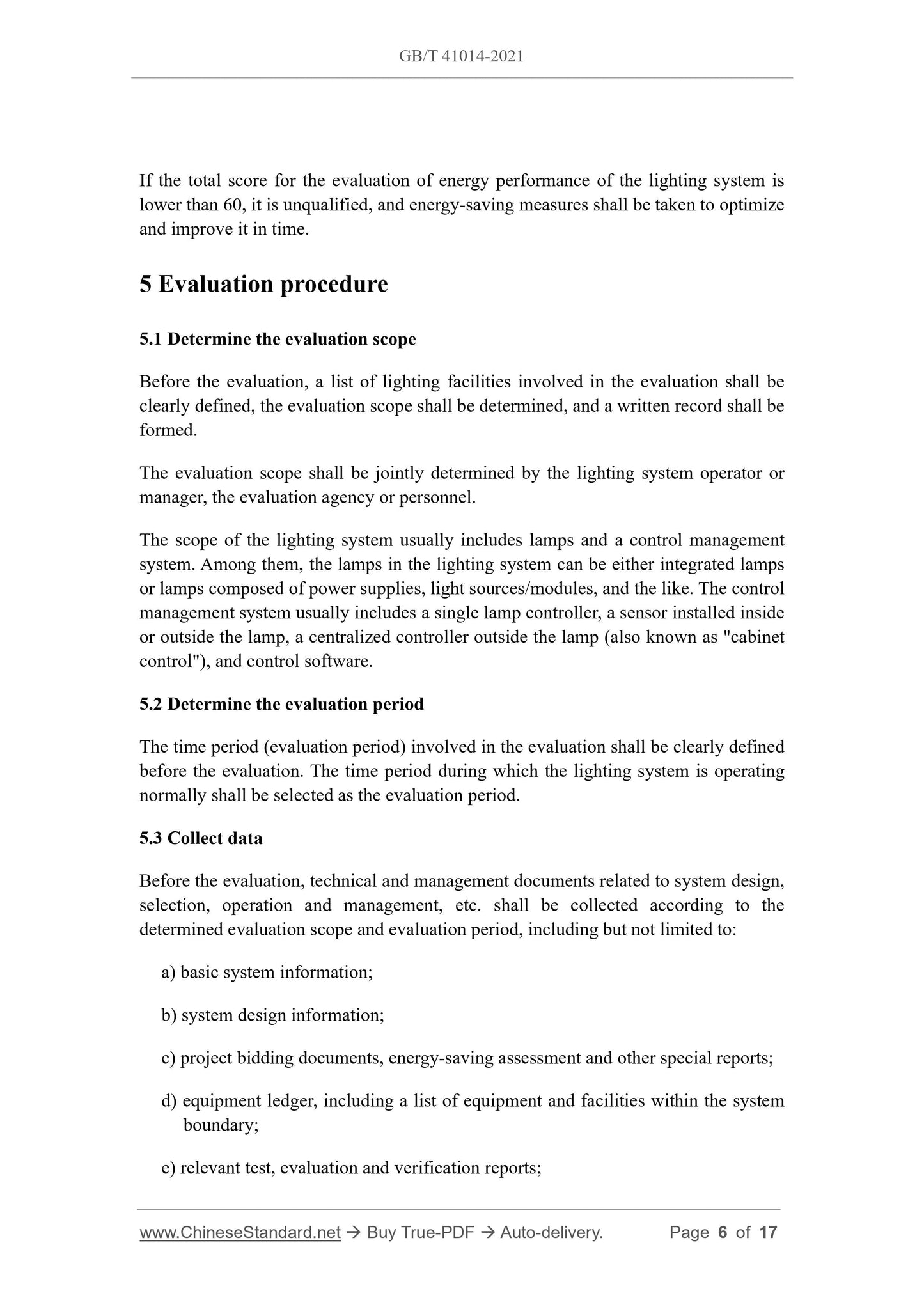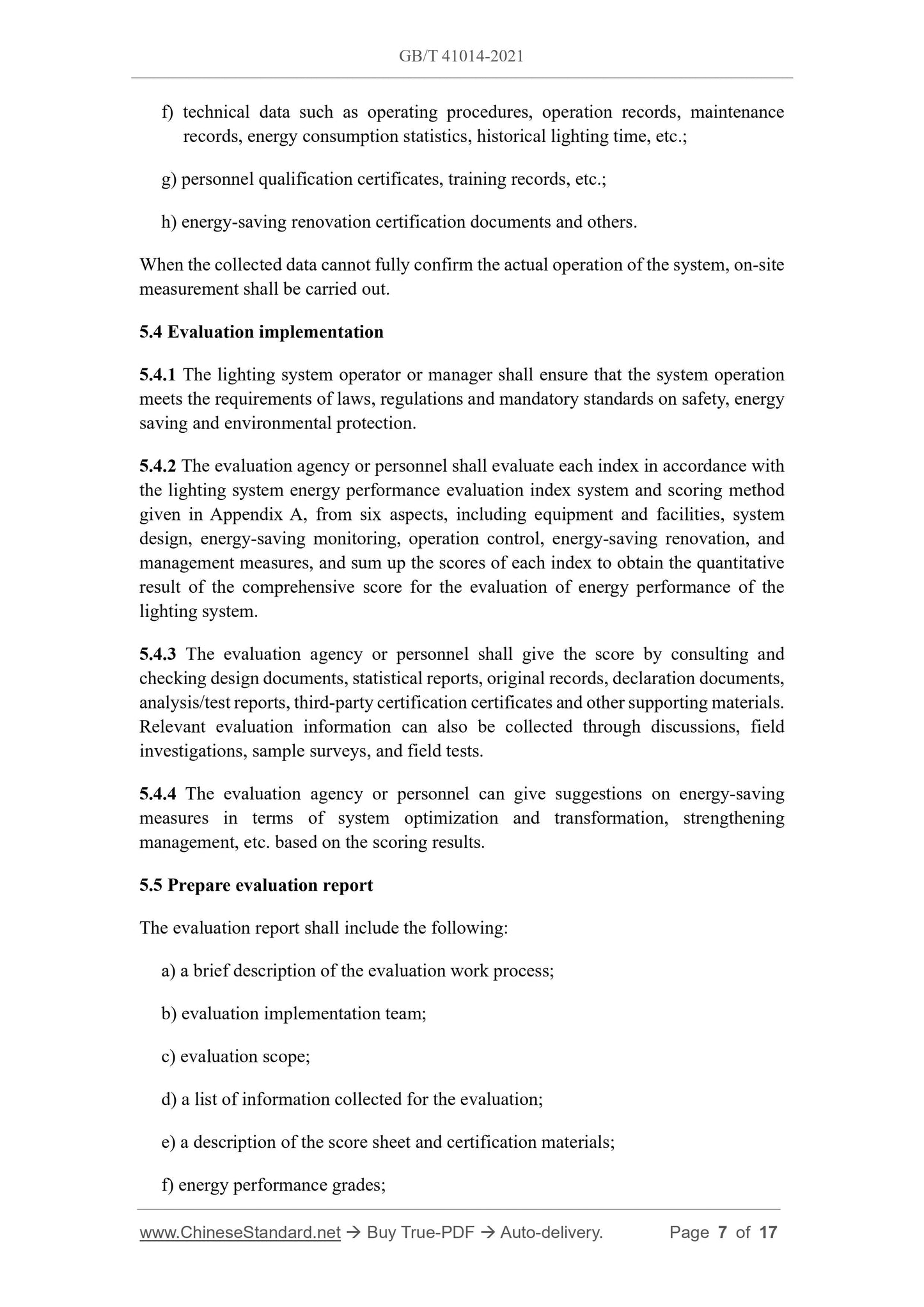1
/
of
5
www.ChineseStandard.us -- Field Test Asia Pte. Ltd.
GB/T 41014-2021 English PDF (GB/T41014-2021)
GB/T 41014-2021 English PDF (GB/T41014-2021)
Regular price
$170.00
Regular price
Sale price
$170.00
Unit price
/
per
Shipping calculated at checkout.
Couldn't load pickup availability
GB/T 41014-2021: Evaluation of the energy performance of lighting systems
Delivery: 9 seconds. Download (and Email) true-PDF + Invoice.Get Quotation: Click GB/T 41014-2021 (Self-service in 1-minute)
Newer / historical versions: GB/T 41014-2021
Preview True-PDF
Scope
This document specifies the evaluation grades and evaluation procedures for the energyperformance of lighting systems.
This document applies to the evaluation of energy performance of lighting systems in
stably operated urban roads, highway tunnels, public buildings, and outdoor work
places. It can be used as a reference for the evaluation of energy performance of other
lighting systems.
This document does not apply to the acceptance evaluation of lighting systems.
Basic Data
| Standard ID | GB/T 41014-2021 (GB/T41014-2021) |
| Description (Translated English) | Evaluation of the energy performance of lighting systems |
| Sector / Industry | National Standard (Recommended) |
| Classification of Chinese Standard | F01 |
| Word Count Estimation | 10,126 |
| Issuing agency(ies) | State Administration for Market Regulation, China National Standardization Administration |
Share









